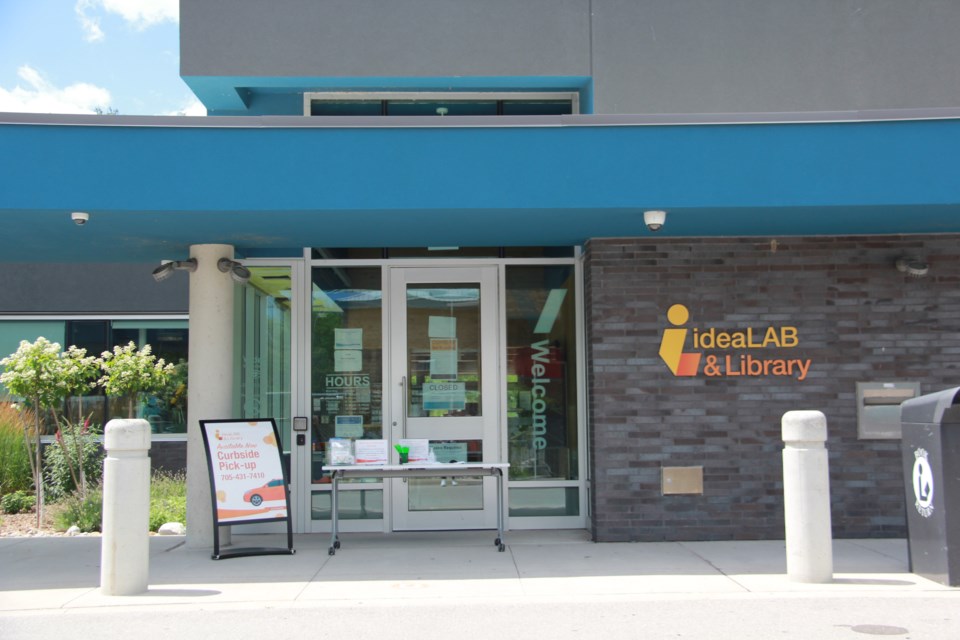The new Innisfil Public Library master plan looks to ensure the “innovative” and “world-leading” library system can best serve the town’s residents over the next 30 years.
To do that, the town needs to increase the size of its library system by more than 50,000 square feet by 2051 to meet the demand required by an estimated population of nearly 87,000.
That was the message from LGA Architectural Partners and Lighthouse Consulting who presented the plan at the recent Innisfil council meeting.
“The demand is just going through the roof,” said Stephen Abram, CEO of Lighthouse. “You don’t have enough space to put all the people you’re going to have.”
As strong as the system currently is, it doesn’t have enough space to suit the town’s current population and if it doesn’t increase in size soon, it will fall behind provincial standards and be hard-pressed to keep up with the needs of the community.
The new master plan goes further than dealing with space for books. It highlights a lack of adequate space for local programs apart from the Cookstown and Lakeshore branches, and a system- or town-wide deficiency of space for cultural displays and programs, as well as outdoor program space and engagement opportunities — outside of sports and recreation — for seniors, older adults and teens.
The plan lauds what the library system does within its means today to support residents but looks to showcase how it can better serve the community by expanding beyond the four current branches to seven branches, six of which are proposed for the municipality’s eastern settlement area.
Of the current branches, the Lakeshore and Cookstown branches require the least amount of work to remain viable in the community. Already nearing the end of its lifespan, the Stroud branch is proposed to be moved to a stand-alone building that can serve as a central community hub. The Churchill branch is proposed to be shut down entirely.
“(The branch) is far too small and cannot be improved to support modern library operations or AODA legislation in a cost-effective way,” the report stated, suggesting the space could be re-purposed to better serve the arts or other activities in the municipality.
New branches are proposed for the southeast and northeast portions of the community, along with one at the Orbit development and at the municipal campus near Yonge Street and Innisfil Beach Road.
With a population tens of thousands of people fewer than Barrie - and hundreds of thousands of people smaller than Mississauga, despite taking up essentially the same amount of physical space – Coun. Rob Nicol questioned the need for so many separate library branches in Innisfil by 2051.
“I see how the proposed locations make sense, but to me, I wonder if it might seem a bit excessive to have freestanding locations pretty much every second line,” Nicol said. “How do we justify seven locations for 50,000 people in the next 30 years?”
Barrie is an example close to Abram’s heart, as his company worked on its master plan as well. It also has the largest library-space deficit in all of Ontario, a dubious honour shared with Thunder Bay. But Innisfil’s northern neighbour is working to fix that. They now have three branches, adding one as recommended by the consultants, with plans to add another five over the next two decades.
But, more importantly, the libraries can help drive the growth they're designed to accommodate.
“Libraries, schools and community centres are the three things people choose for quality of life to choose to move,” Abram said. “You are going to have a younger cohort of people, more diverse, coming in, and the schools, libraries and parks and rec are going to be infinitely important to sustain the value of the house and the value of the community.”
The master plan was created following an extensive consultation process, including focus groups and surveys. The 27 recommendations found within the plan are based both on what the consultants were told plus the general learnings discovered during the COVID-19 pandemic.
Included in each of the new proposed branches - and the redesigned Stroud branch - is a “village common,” an outdoor area that Abram said would add a vital dynamic to each library campus, creating a central meeting place in each community.
“Our COVID learning was that we need more outdoor, break-the-box thinking on libraries, and we can create opportunities for healthy living, the outdoor lifestyles of Innisfillians,” Abram said. “You don’t really have a downtown, so how can we create common spaces for people to collect and learn and play together?”
The master plan calls for the redesigned Stroud branch, the new southeast branch and a kiosk in the Orbit development to be online by 2026, with the Churchill branch to be closed by that time as well. The Orbit branch would be built in two phases - by 2031 and 2051 - as the population grows around the new GO station.
The proposed branch at the municipal campus would be online by 2041, and the northeast campus, which Coun. Alex Waters suggested should be built in partnership with Friday Harbour, would be ready for 2051.
The previous Innisfil Public Library master plan was created in 2013.





